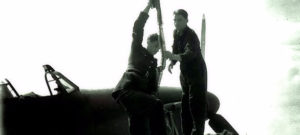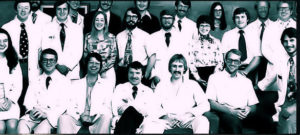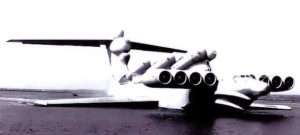What's in a name?
 Despite the name Dow-Carnegie Institute of Technology (DCIT), the Institute has little to do with Dow Chemical or Carnegie-Mellon University as of today. The Institute began as a joint-venture from what was then the Carnegie Institute of Technology and the Dow Chemical Corporation from 1918-1920 for aircraft fuel research in Midland, MI (just across the street from the Dow Chemical headquarters). From the venture came an independent business entity, but the name stuck.
Despite the name Dow-Carnegie Institute of Technology (DCIT), the Institute has little to do with Dow Chemical or Carnegie-Mellon University as of today. The Institute began as a joint-venture from what was then the Carnegie Institute of Technology and the Dow Chemical Corporation from 1918-1920 for aircraft fuel research in Midland, MI (just across the street from the Dow Chemical headquarters). From the venture came an independent business entity, but the name stuck.
Our History
 Although the joint-venture between Dow Chemical and CIT eventually dissolved in 1920, the idea of aerospace research and development continued -- buoyed by a few government grants and contracts. The Dow-Carnegie Institute of Technology, officially founded on August 11th in 1920, managed to continue despite many defense corporations folding during this time period. Within two years, however, it appeared to be on its last legs.
Although the joint-venture between Dow Chemical and CIT eventually dissolved in 1920, the idea of aerospace research and development continued -- buoyed by a few government grants and contracts. The Dow-Carnegie Institute of Technology, officially founded on August 11th in 1920, managed to continue despite many defense corporations folding during this time period. Within two years, however, it appeared to be on its last legs.
In 1922, though, a company called the Aircraft Development Corporation was founded that kept the DC Institute afloat as its primary research and development branch. Aircraft Development Corporation would later change its name to the Detroit Aircraft Corporation in 1929 as the business moved into Detroit. It was one of -- if not the -- largest aircraft manufacturers in the world as it owned the entirety of: Ryan Aircraft Corp., Aircraft Development Corp., Aviation Tool Co., Grosse Ile Airport, Inc., Marine Aircraft Corp., Park's Air College and Affiliated Companies, Detroit Aircraft Export Co., Gliders, Inc., and Eastman Aircraft Corp. It also owned most of the Blackburn Aeroplane and Motor Company and even 40% in an up-and-coming company called Lockheed Aircraft Company.
Unfortunately, the Great Depression hit the Detroit Aircraft Corporation hard, and eventually, it dissolved into numerous entities that either faded away or were bought out. By 1931, the once aerospace giant was defunct.
However, beginning in the mid-1930s, with tensions in Europe increasing with the rise of Adolf Hitler in Germany and Benito Mussolini in Italy, the US began ramping up its spending in defense technology. Although the United States was not yet officially in the war, entry into battle seemed imminent and the country was still supplying European Allies unofficially. With the coming of the war, one of the struggling remnants of the Detroit Aircraft Corporation -- the Dow-Carnegie Institute of Technology-- emerged to answer the call.
 With the United States officially entering World War II in 1941 with the bombing of Pearl Harbor, demand for more weapons and vehicles -- with greater and greater innovation -- skyrocketed. The DC Institute of Technology developed several of its namesake weapons -- mainly rockets -- during this time period. It also engineered and manufactured a few aircraft like the B-87, but as Lockheed and Boeing could manufacture the crafts cheaper, DCIT focused primarily on the engines and turbines used in the other company's aircraft. Several prestigious plane models carried DCIT engines as they flew into battle.
With the United States officially entering World War II in 1941 with the bombing of Pearl Harbor, demand for more weapons and vehicles -- with greater and greater innovation -- skyrocketed. The DC Institute of Technology developed several of its namesake weapons -- mainly rockets -- during this time period. It also engineered and manufactured a few aircraft like the B-87, but as Lockheed and Boeing could manufacture the crafts cheaper, DCIT focused primarily on the engines and turbines used in the other company's aircraft. Several prestigious plane models carried DCIT engines as they flew into battle.
World War II officially ended in 1945, and the year prior, President Franklin D. Roosevelt signed the 1944 GI Bill -- designed to provide education and training for returning troops to be better equipped for re-entry into the workforce. In response to the GI Bill, and a recognition that their facility was not reaching its full potential, DCIT began offering training programs for returning soldiers and dropped all Detroit Aircraft Corporation branding.
 The 1950s saw the first major shift in the Institute. Recognizing the potential, DCIT began a push in the medical industry. DCIT entered a joint partnership with the Orthopedic Frame Company (later the Stryker Corporation) in 1957 to research and develop high-end medical devices.
The 1950s saw the first major shift in the Institute. Recognizing the potential, DCIT began a push in the medical industry. DCIT entered a joint partnership with the Orthopedic Frame Company (later the Stryker Corporation) in 1957 to research and develop high-end medical devices.
In pushing the new drive for medical pursuits, DCIT opened a new facility just outside Washington, DC in 1959 to better suit its efforts.
 With the Cold War in full swing by this point, more and more high-end, and very secretive, technology was developed at DCIT including a special stealth bomber prototype known as the Y-457 that, while it never actually went beyond the prototype stage, was seen as the most advanced aircraft of the decade.
With the Cold War in full swing by this point, more and more high-end, and very secretive, technology was developed at DCIT including a special stealth bomber prototype known as the Y-457 that, while it never actually went beyond the prototype stage, was seen as the most advanced aircraft of the decade.
DCIT continued its expanse within the medical industry on into the 1970s, with many notable employees emerging into their own during this time. With recent advances in devices such as pacemaker technology, DCIT became a forefront authority on research and development, as well as a sort of starting point for many prominent minds. Franz Schindler, for example, was once a junior executive at DCIT before traveling back to his home country of Germany to help in re-inventing Fresenius with Else Kroner (daughter of Eduard Fresenius). The Fresenius company brings in approximately billions of dollars per year now.
In 1976, the Dow-Carnegie Institute of Technology gained its 300th patent for the adoption heating-cooling system.
 With powerhouses like IBM, and later Apple and Microsoft, emerging more and more profoundly, DCIT took a digital leap and started engaging in information technology services in the 1980s. By 1986, DCIT had one of the most advanced computer laboratories of the time. DCIT worked extensively with the Science Applications International Corporation (SAIC) and then Leidos when SAIC spun-off into that brand. Even today, they share a building in Alexandria, VA.
With powerhouses like IBM, and later Apple and Microsoft, emerging more and more profoundly, DCIT took a digital leap and started engaging in information technology services in the 1980s. By 1986, DCIT had one of the most advanced computer laboratories of the time. DCIT worked extensively with the Science Applications International Corporation (SAIC) and then Leidos when SAIC spun-off into that brand. Even today, they share a building in Alexandria, VA.
 In 1994, DCIT opened two new facilities: one in Florida (focusing on naval manufacturing) and the other in Montana (taking over the aerospace division). With larger areas to operate, major manufacturing facilities and hangars were built, and DCIT saw its largest growth ever -- going from only around 400 employees in three locations to over 1000 employees at five locations -- all within a couple of years.
In 1994, DCIT opened two new facilities: one in Florida (focusing on naval manufacturing) and the other in Montana (taking over the aerospace division). With larger areas to operate, major manufacturing facilities and hangars were built, and DCIT saw its largest growth ever -- going from only around 400 employees in three locations to over 1000 employees at five locations -- all within a couple of years.
In 1997, the Dow-Carnegie Institute of Technology formally ended its roots in Detroit by shifting its headquarters to Battle Creek, MI in the Battle Creek Federal Center alongside many agencies within the DLA. In 2003, the building was renamed the Hart-Dole-Inouye Federal Center.


